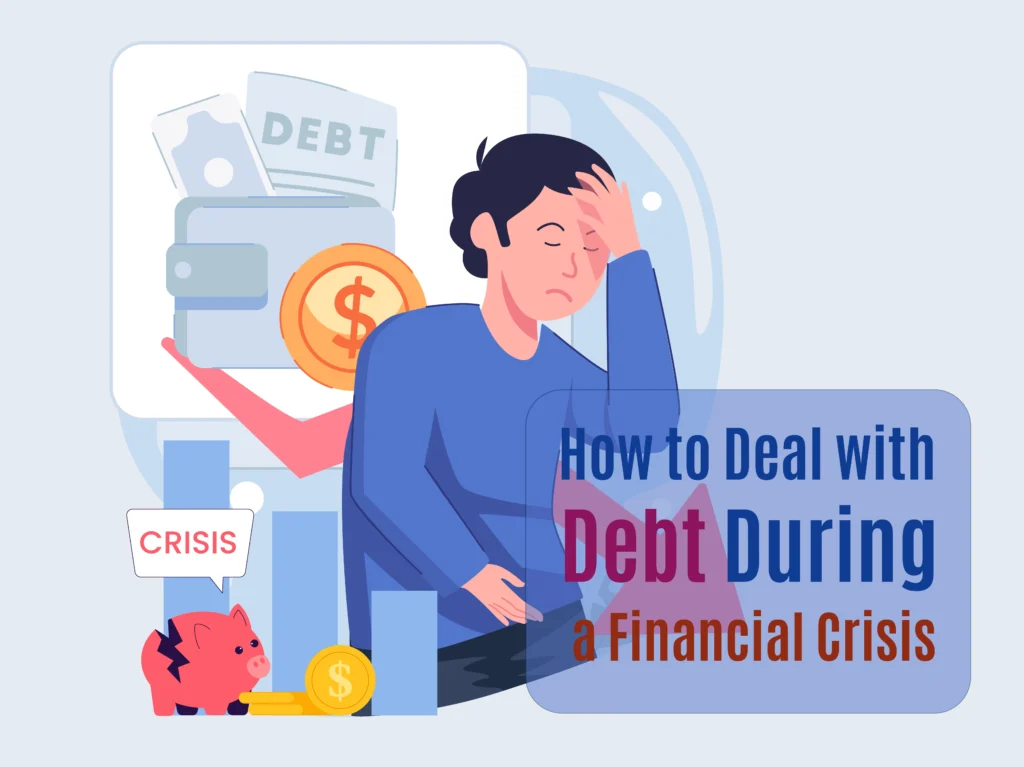Understanding the Difference Between Good Debt and Bad Debt
Not all debt is created equal. While debt often carries a negative connotation, there is a crucial distinction between good debt and bad debt. Understanding this difference can help you make smarter financial decisions, build wealth, and avoid financial pitfalls. Whether you’re considering taking out a mortgage, student loan, or using credit cards, knowing when debt can benefit you—and when it can harm you—is essential for managing your money effectively.
Good debt serves as an investment in your future, helping you acquire appreciating assets or build skills that increase your earning potential. In contrast, bad debt often drains your finances without offering long-term value, such as high-interest credit card balances or payday loans. This article will break down the characteristics of both types of debt and provide practical advice on how to leverage good debt while steering clear of the dangers of bad debt.

What Is Debt? A Quick Overview
Before we dive into the distinction between good and bad debt, let’s first define what debt is. Debt occurs when you borrow money with the agreement to pay it back over time, usually with interest. You can accumulate debt through loans, credit cards, or other types of borrowing.
Why People Take on Debt
People take on debt for various reasons, and not all of them are negative. Some of the most common reasons include funding large purchases (such as a home or car), covering emergency expenses, or investing in education or a business. Debt can provide financial leverage when managed wisely, but it can also lead to financial strain when mishandled.
The Role of Interest Rates in Debt
The cost of debt is determined by interest rates, which are essentially the price you pay to borrow money. Low-interest debt is easier to manage, while high-interest debt, like credit card debt, can quickly become expensive if not paid off promptly. The longer you take to repay debt, the more interest accumulates, making even small amounts of debt grow significantly over time.
What is Good Debt?
Good debt is borrowing that ultimately improves your financial situation by increasing your net worth or earning potential. Unlike bad debt, good debt has the potential to provide long-term financial benefits that outweigh the cost of borrowing.
Characteristics of Good Debt
Good debt usually shares several characteristics:
- Increases net worth: Good debt helps you acquire valuable assets or skills that can increase your net worth, such as property or education.
- Low interest rates: Good debt often comes with relatively low-interest rates, making it more affordable and manageable over time.
- Long-term benefits: The long-term financial gains from good debt (such as earning potential or asset appreciation) typically outweigh the costs of borrowing.
Examples of Good Debt
Some debts are generally considered “good” because they have the potential to provide long-term financial growth.
Mortgage Loans
A mortgage loan allows you to buy a home, one of the biggest financial investments most people make. While you’ll likely take on a large amount of debt, owning a home typically builds equity over time as property values appreciate. Additionally, your home can become a valuable financial asset, providing a foundation for financial stability or even acting as a source of funds if you sell or refinance.
Student Loans
Education is often seen as an investment in yourself. By taking on student loans, you’re acquiring the skills and qualifications needed to enter or advance in a career that provides higher income potential. While student loans can become problematic if you borrow too much or choose a field with low earning prospects, they are generally considered good debt because they are tied to increased earning potential.
Business Loans
Entrepreneurs often need to borrow money to start or expand a business. If successful, a business loan can help you grow a company, generate revenue, and create wealth over time. Borrowing for business purposes is considered good debt if it helps generate income and leads to financial growth.
Real Estate Investments
Borrowing money to invest in real estate can also be considered good debt if the property generates rental income or appreciates in value. Real estate investments provide ongoing cash flow and can increase your wealth through property appreciation.
When Good Debt Becomes Bad
Even good debt can turn bad if it’s not managed properly. For example, taking on too much student loan debt without clear career prospects or over-leveraging a property with too many mortgages can lead to financial difficulties. It’s important to borrow responsibly, within your means, and with a clear repayment plan in place.
What is Bad Debt?
Bad debt is borrowing that doesn’t provide any long-term financial benefits and often leads to a cycle of borrowing to cover short-term needs. Bad debt tends to carry high interest rates and doesn’t increase your wealth or financial stability.
Characteristics of Bad Debt
Bad debt typically has several negative characteristics:
- High-interest rates: Bad debt often comes with high interest rates, making it difficult and expensive to pay off.
- No financial return: Unlike good debt, bad debt doesn’t offer a future financial return or increase your net worth.
- Short-term gratification: Bad debt is often used to fund non-essential purchases or lifestyle expenses that don’t contribute to long-term financial growth.
Examples of Bad Debt
Bad debt often comes from borrowing for non-essential, depreciating items or for expenses that don’t offer financial returns.
Credit Card Debt
Credit card debt is one of the most common forms of bad debt, primarily due to the high interest rates associated with unpaid balances. Many people use credit cards to finance non-essential purchases such as clothing, dining out, or vacations. Since these items don’t increase in value or provide financial benefits, carrying a balance on a high-interest credit card can quickly spiral into a large, hard-to-manage debt load.
Payday Loans
Payday loans are notorious for their sky-high interest rates and short repayment terms. While they may provide quick cash, payday loans can trap borrowers in a cycle of debt due to their high costs and the difficulty of repaying them in full by the next payday.
Auto Loans for Luxury Vehicles
While buying a vehicle may be necessary for transportation, taking out a loan to purchase an expensive, luxury vehicle is often considered bad debt. Cars are depreciating assets, meaning they lose value over time. Borrowing large amounts of money for a vehicle that will be worth much less in a few years doesn’t provide any financial return and can strain your budget.
Personal Loans for Non-Essential Spending
Using personal loans to fund non-essential purchases, such as a vacation or expensive electronics, is another example of bad debt. These loans usually carry higher interest rates than mortgages or student loans, and the items purchased don’t contribute to your long-term financial health.
When Bad Debt Becomes Dangerous
Bad debt becomes especially dangerous when it leads to a cycle of borrowing. High-interest rates and short repayment periods make it easy to fall behind on payments, leading to additional fees, growing balances, and damage to your credit score. This can lead to long-term financial struggles and, in extreme cases, bankruptcy.
≫ Learn More: How to Create a Debt Repayment Plan That Works
The Key Differences Between Good Debt and Bad Debt
Now that we’ve explored examples of good and bad debt, let’s take a closer look at how these two types of debt differ.
Does the Debt Improve Your Financial Future?
The primary difference between good debt and bad debt is whether the borrowing will improve your long-term financial health. Good debt helps you build assets, grow your income, or invest in your future, while bad debt typically provides short-term gratification but no long-term value.
Interest Rates and Cost of Borrowing
Good debt tends to come with lower interest rates, making it more affordable to manage and pay off over time. For example, mortgage loans or student loans typically have lower interest rates than credit cards or personal loans. In contrast, bad debt often carries high interest rates, making it more expensive to repay and more likely to trap borrowers in a cycle of debt.
Tangible and Intangible Returns
Good debt typically offers tangible or intangible returns. For example, a mortgage gives you homeownership, which can appreciate in value, and student loans provide you with an education that can lead to higher earnings. Bad debt, on the other hand, is often used to purchase depreciating items like luxury cars or fund non-essential purchases, offering no financial returns.
How to Manage Good Debt Wisely
While good debt can provide financial benefits, it’s essential to manage it responsibly to avoid financial difficulties.
Borrowing Within Your Means
One of the most important rules of managing good debt is to borrow within your means. Just because you can qualify for a large loan doesn’t mean you should take it. Make sure you can comfortably afford the payments and that the debt won’t strain your finances.
Making Consistent Payments
Timely payments are critical to managing good debt. Whether it’s a mortgage, student loan, or business loan, staying on top of your payments helps you build a positive credit history and ensures that your debt remains manageable.
Reinvesting or Leveraging Good Debt
Once you’ve established good debt, consider how you can reinvest or leverage it for further financial growth. For example, if you’ve built equity in your home, you could use a home equity loan to finance a business or invest in an income-generating property.
How to Avoid Bad Debt
Avoiding bad debt requires discipline and smart financial habits. Here are some strategies to help you steer clear of bad debt.
Living Below Your Means
One of the best ways to avoid bad debt is by living below your means. This means spending less than you earn and avoiding unnecessary purchases that could lead to debt. By sticking to a budget and focusing on needs rather than wants, you can avoid taking on debt for non-essential expenses.
Building an Emergency Fund
An emergency fund acts as a financial cushion, helping you cover unexpected expenses without turning to high-interest debt like payday loans or credit cards. Aim to save three to six months’ worth of living expenses in a separate savings account to protect yourself from financial surprises.
Using Credit Wisely
Credit cards can be a useful financial tool when used responsibly. Always pay off your balance in full each month to avoid accumulating interest and prevent credit card debt from spiraling out of control. If you do need to carry a balance, make a plan to pay it off as quickly as possible.
Common Debt Management Mistakes to Avoid
Even when you’re borrowing responsibly, it’s important to avoid common debt management mistakes that can lead to financial trouble.
Overleveraging Yourself
Taking on too much debt, even if it’s considered good debt, can put you at risk of financial strain. For example, taking on a mortgage that’s too large for your income or borrowing excessive amounts for education can leave you with burdensome payments that strain your budget.
Ignoring Interest Rates
Many borrowers focus only on the amount they’re borrowing and ignore the interest rates. However, high-interest debt can quickly become unmanageable. Always consider the interest rate before taking on debt, and aim to secure the lowest possible rate.
The Long-Term Benefits of Managing Good Debt and Avoiding Bad Debt
When you manage good debt responsibly and avoid bad debt, you set yourself up for long-term financial success.
Building Wealth with Good Debt
Good debt can help you build wealth over time. Whether it’s through homeownership, education, or business investments, responsible borrowing can lead to significant financial growth and stability.
Financial Freedom Without Bad Debt
Avoiding bad debt provides financial freedom. Without the burden of high-interest debt, you’ll have more room in your budget for saving, investing, and achieving your financial goals.
Conclusion: Know the Difference and Use Debt Wisely
Understanding the difference between good debt and bad debt is key to making smart financial decisions. Good debt can help you build wealth and improve your financial future, while bad debt can hinder your financial progress. By managing your debt responsibly, borrowing within your means, and avoiding high-interest debt, you can create a strong financial foundation that leads to long-term success.












